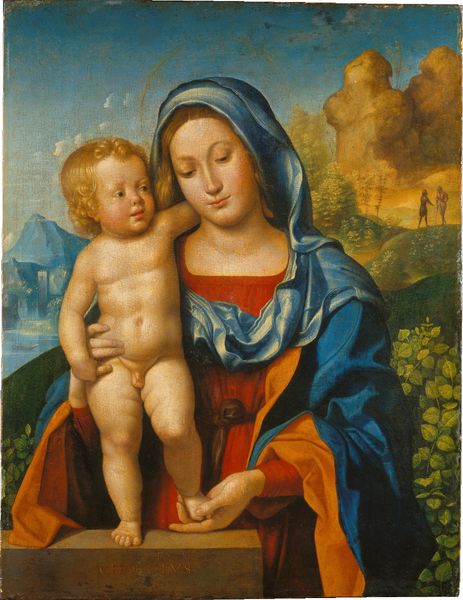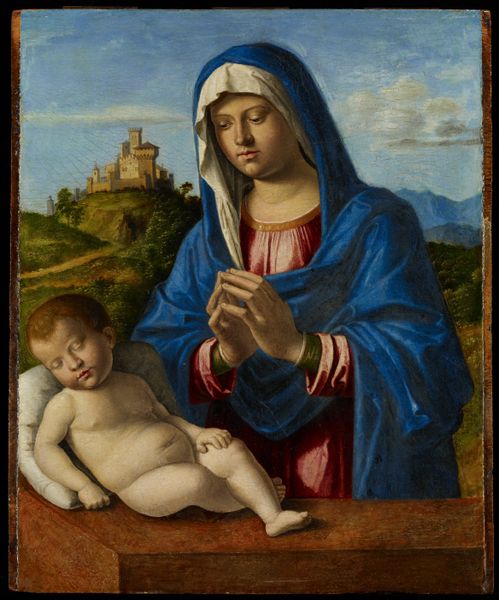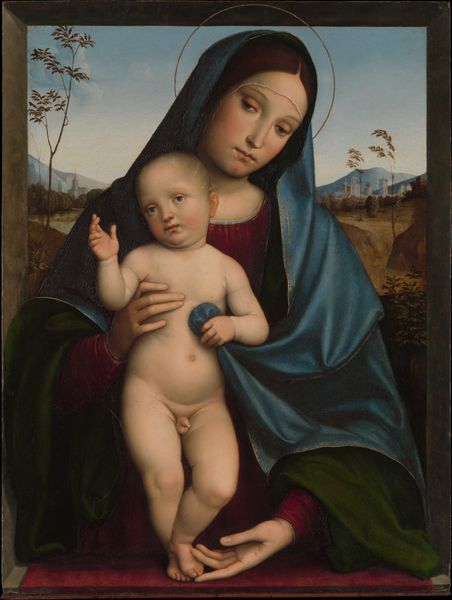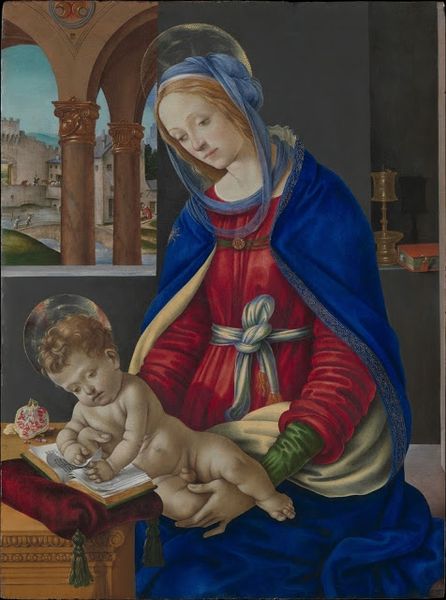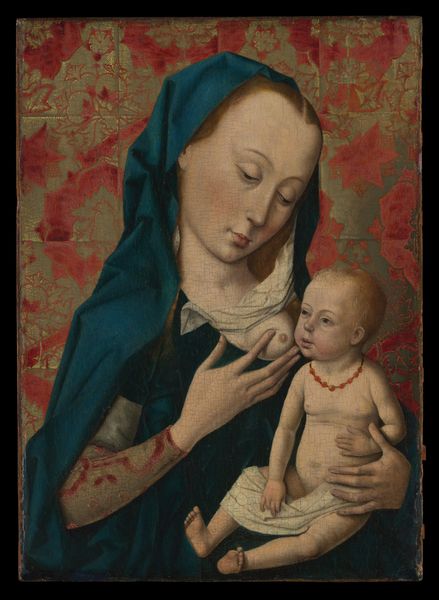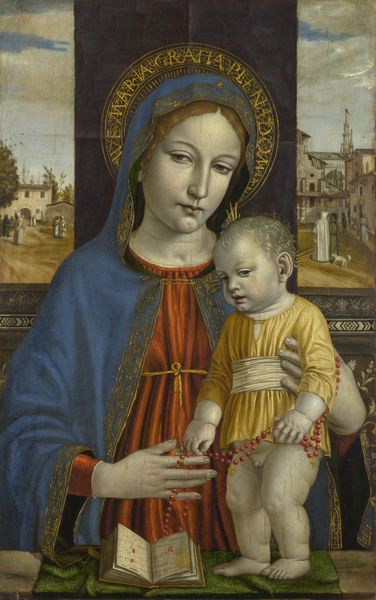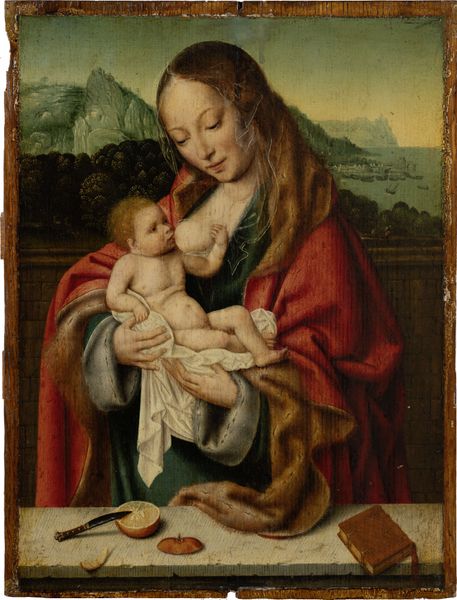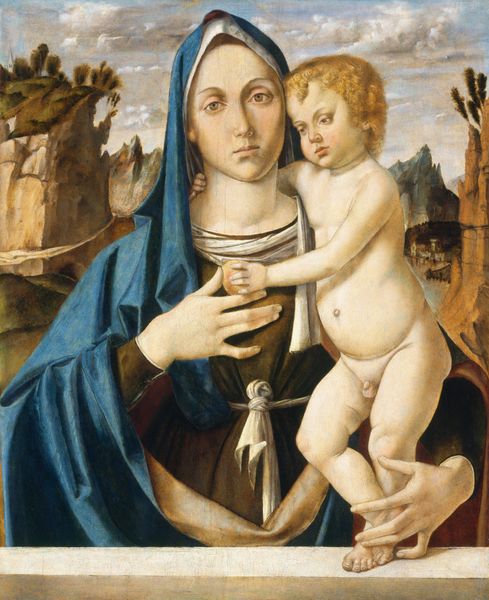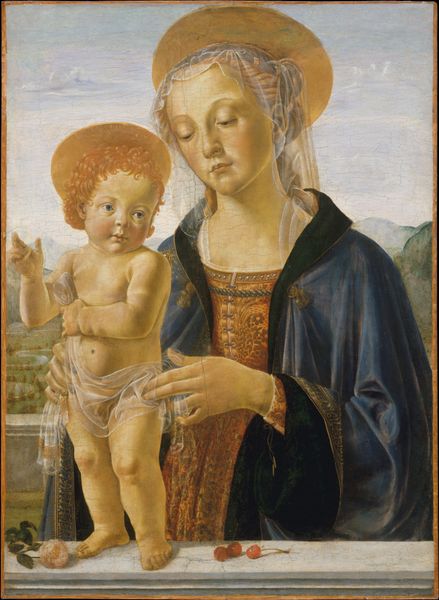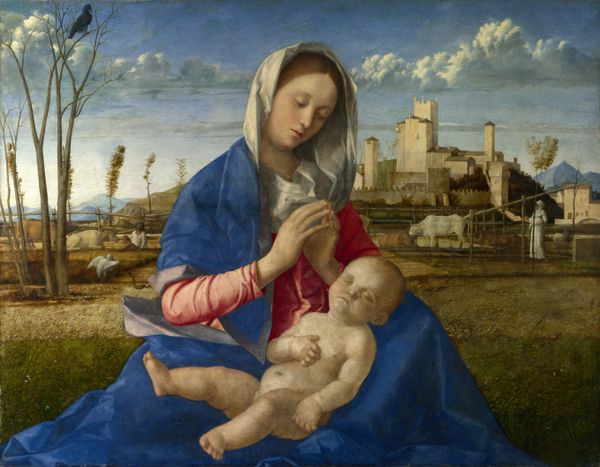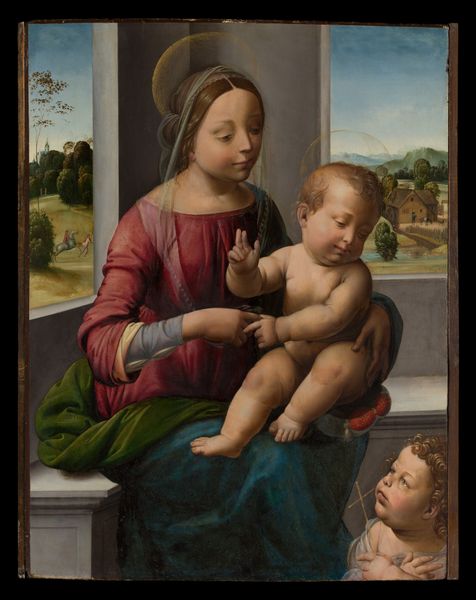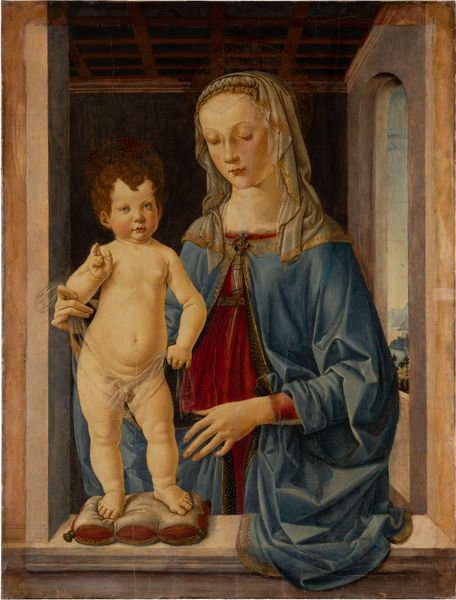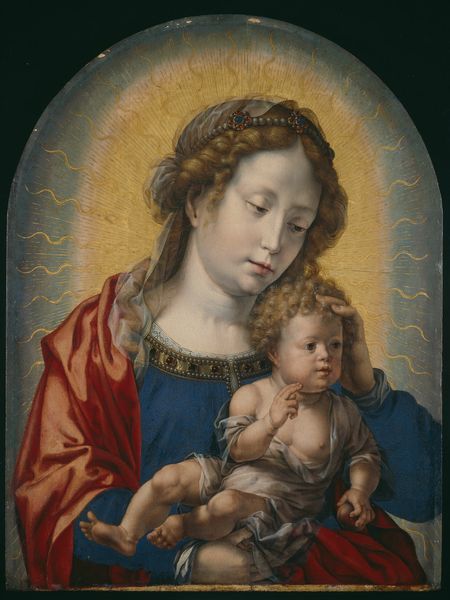
Madonna Adoring the Child 1479 - 1523
0:00
0:00
painting, oil-paint
#
portrait
#
painting
#
oil-paint
#
landscape
#
figuration
#
madonna
#
oil painting
#
italian-renaissance
Dimensions: 24 3/4 x 20 1/2 in. (62.9 x 52.1 cm)
Copyright: Public Domain
Curator: Bartolomeo Montagna, or Bartolomeo Cincani, completed "Madonna Adoring the Child" between 1479 and 1523. This oil painting now resides at the Metropolitan Museum of Art. Editor: It’s beautiful, somber even. The Madonna’s eyes are cast down, almost like she's anticipating something…unpleasant. And that distant landscape behind her is striking. It seems to emphasize her isolation, yet also gives her a strong place in the history of this land and moment. Curator: Renaissance depictions of the Madonna often carried political weight, especially when set against backdrops showcasing civic infrastructure. Consider how this placement might lend itself to projecting communal stability through religious icons. It emphasizes the institutional influence in Renaissance society. Editor: The baby looks vulnerable and somewhat sickly, almost imploring. It challenges that notion of communal stability that you’re implying. This image is heavy with motherly worry and protection rather than institutional celebration. Is this maybe something that can stand in solidarity to women today? Curator: Interesting, however I must remind us that depictions of the Madonna in this period followed very strict representational formulas that also emphasized class and social role. Her expression isn't a simple emotion; it’s crafted to convey a specific theological concept and communicate to its wealthy patrons a divine birth. Editor: That makes sense, but if you consider the very real and physical dynamics that were required in order to perform the immaculate divine birth. To assume this can’t speak to social concerns beyond art history and more into reality is unfair, these stories often become tools for those dealing with their social pressures. The baby has his own ideas; the expression and attention looks different than just divinity. Curator: You are suggesting that the emotions attributed to the Madonna can be interpreted and repurposed for use outside their original design? I would say this risks isolating elements to a degree that may strip it of any useful historical meaning. But I admit, our perception continues to be molded in our present environment and the need to constantly evolve meaning-making cannot be ignored, despite what the rich collectors wanted to show in their private collection! Editor: Right. I see it as giving new agency and perspective to a historic icon, particularly in a modern social framework where identities intersect and histories become increasingly subjective and layered. Maybe more than Montagna ever imagined! Curator: I appreciate you challenging me on this piece. Considering these intersecting viewpoints allows for a broader understanding of not just the art but of the audiences who continue to engage with it. Editor: Exactly, and I walk away thinking a little more carefully about the painting's implications within society now and for my family.
Comments
No comments
Be the first to comment and join the conversation on the ultimate creative platform.
